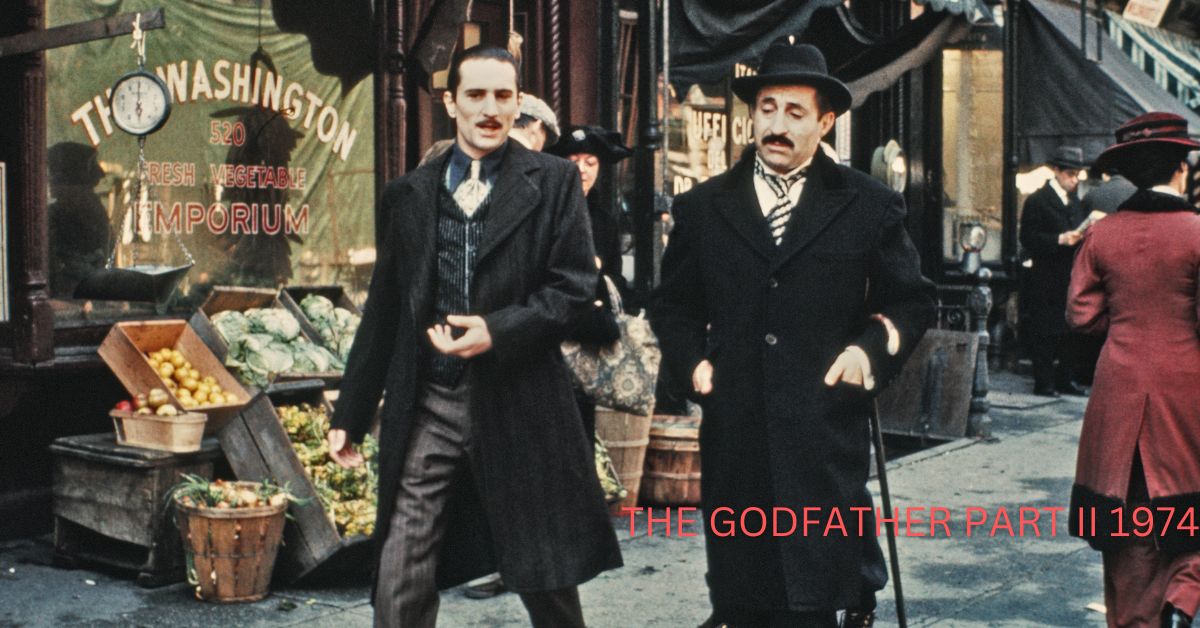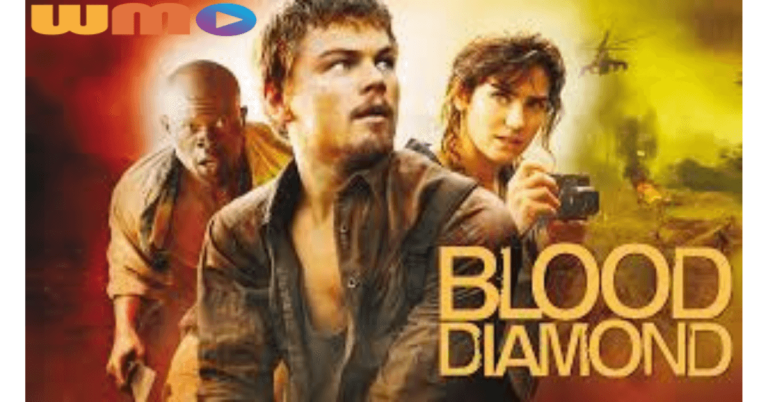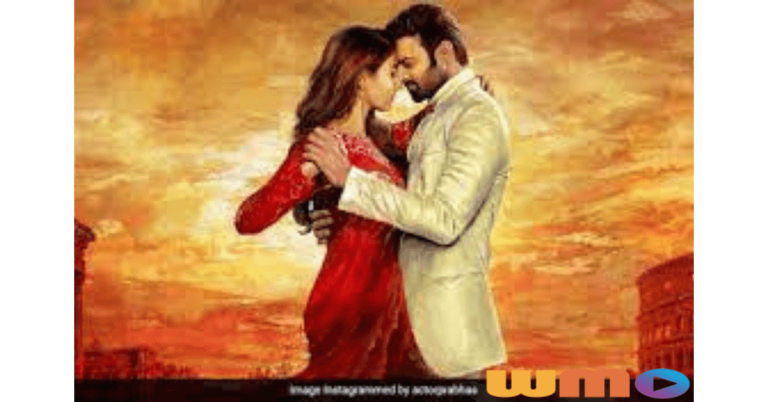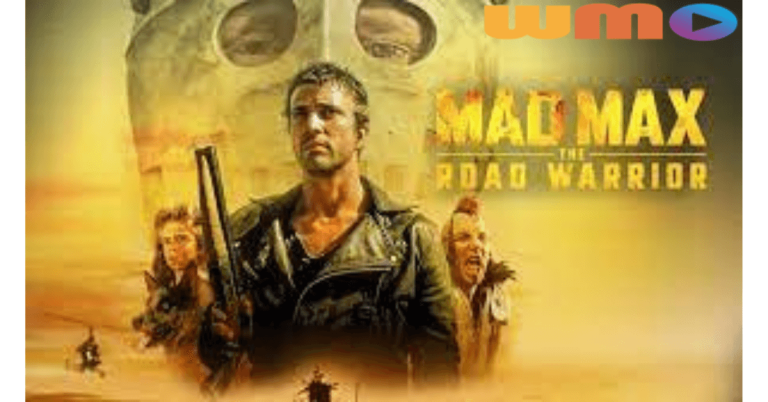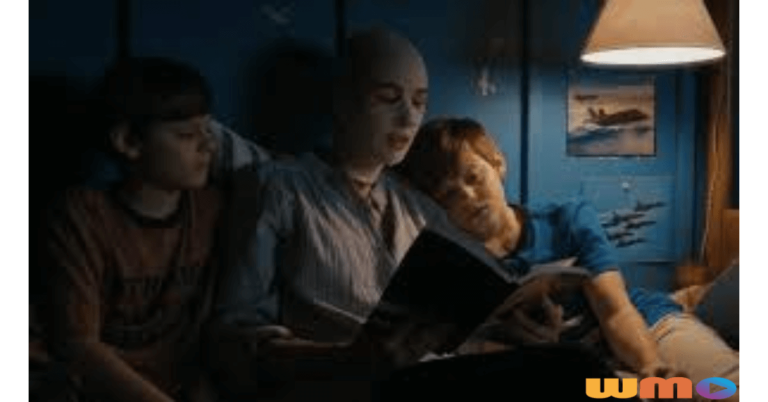The Godfather Part II 1974: Movie Review
The Godfather is a classic American crime film that was released in 1972. Directed by Francis Ford Coppola, the film is based on the best-selling novel by Mario Puzo. The movie is set in the 1940s and revolves around the Corleone family, a fictional New York Mafia family. The Godfather is widely regarded as one of the greatest films in the history of cinema, and has been praised for its compelling storyline, iconic characters, and memorable quotes.
The Godfather 1974 cast includes Marlon Brando, Al Pacino, James Caan, Richard S. Castellano, and Robert Duvall, among others. Brando’s performance as Don Vito Corleone earned him an Academy Award for Best Actor, while Pacino’s portrayal of Michael Corleone is widely regarded as one of the greatest performances in cinematic history. The film was followed by two sequels, The Godfather Part II and The Godfather Part III, both of which were also directed by Coppola and featured many of the same cast members.
The Godfather Trilogy has become a cultural phenomenon, with fans around the world quoting lines from the movie and collecting memorabilia related to the film. The movie has also been the subject of critical analysis, with scholars examining the film’s themes of family, power, and corruption. In this article, we will explore the plot summary of The Godfather, the cast of the film, and other details related to this iconic movie.
Key Takeaways
- The Godfather is a classic American crime film that was released in 1972 and is widely regarded as one of the greatest films in the history of cinema.
- The film features an all-star cast including Marlon Brando, Al Pacino, and James Caan, among others, and has spawned two sequels.
- The Godfather has become a cultural phenomenon, with fans around the world quoting lines from the movie and collecting memorabilia related to the film.
The Godfather 1974 Cast
The Godfather (1974) is a crime drama film directed by Francis Ford Coppola. The film boasts an ensemble cast that includes some of the most iconic actors of the time. The cast was carefully chosen to bring the characters to life and create a realistic portrayal of the Corleone family.
The film stars Marlon Brando as Vito Corleone, the head of the Corleone family. His performance was widely praised, earning him an Academy Award for Best Actor. Al Pacino also stars in the film as Michael Corleone, Vito’s youngest son who takes over the family business. Pacino’s portrayal of Michael Corleone is considered one of his most iconic roles, and the character has become a cultural icon.
Other notable cast members include James Caan as Sonny Corleone, Richard S. Castellano as Clemenza, and Robert Duvall as Tom Hagen. The film also features Sterling Hayden, John Marley, and Diane Keaton in supporting roles.
The chemistry between the cast members is one of the key factors that make The Godfather such a memorable film. The actors worked together seamlessly to create a believable and compelling story. Each actor brought their unique talents to the table, creating a rich tapestry of characters that audiences still love today.
Overall, The Godfather 1974 cast was a perfect blend of talent and chemistry. Their performances brought the characters to life and helped to create one of the greatest films of all time.
The Godfather Trilogy
The Godfather Trilogy is a series of three films that chronicle the life of the Corleone family, a powerful Italian-American Mafia family. The films were directed by Francis Ford Coppola and based on the novel of the same name by Mario Puzo. The first film, The Godfather, was released in 1972, followed by The Godfather Part II in 1974, and The Godfather Part III in 1990.
The plot of the Godfather trilogy revolves around the Corleone family, with the first two films focusing on the life of Vito Corleone, the patriarch of the family, and his son Michael Corleone. The first film shows Vito’s rise to power as a Mafia boss and his son Michael’s reluctant entry into the family business. The second film tells the story of Michael’s reign as the head of the family and his struggle to maintain his power while dealing with betrayal and family rivalries.
The Godfather trilogy is known for its complex characters and intricate plotlines. The films explore themes of power, family, loyalty, and betrayal. The trilogy is also notable for its strong performances, particularly from Marlon Brando, Al Pacino, and Robert De Niro.
Overall, the Godfather trilogy is a classic of American cinema and is widely regarded as one of the greatest film series of all time. It is a must-watch for anyone interested in the Mafia, crime dramas, or classic cinema.
The Godfather 1974 Director
Francis Ford Coppola directed the iconic crime drama film, The Godfather, which was released in 1974. Coppola had already made a name for himself in the film industry with his previous works, but The Godfather cemented his place as one of the greatest directors of all time.
Coppola’s direction in The Godfather was masterful, as he brought to life the complex and intricate world of the Corleone crime family. He expertly balanced the film’s themes of power, family, and loyalty, and created a cinematic masterpiece that still resonates with audiences today.
One of the most notable aspects of Coppola’s direction in The Godfather was his use of lighting and shadows. He often used low-key lighting to create a sense of tension and danger, and he also used shadows to symbolize the characters’ inner turmoil and moral ambiguity.
Coppola’s attention to detail and his ability to bring out the best in his actors also contributed to the film’s success. He worked closely with the cast, which included Marlon Brando, Al Pacino, and James Caan, to create fully realized and nuanced performances.
Overall, Francis Ford Coppola’s direction in The Godfather was a major factor in the film’s critical and commercial success. His vision and skill as a director brought to life one of the most iconic films in cinematic history.
Memorable Quotes
The Godfather is a movie that is renowned for its memorable quotes. The movie is filled with iconic lines that have become part of popular culture. Some of the most famous quotes from the movie include:
- “I’m gonna make him an offer he can’t refuse.” – Don Vito Corleone
- “Leave the gun. Take the cannoli.” – Peter Clemenza
- “It’s not personal, Sonny. It’s strictly business.” – Michael Corleone
- “I know it was you, Fredo. You broke my heart. You broke my heart!” – Michael Corleone
- “Keep your friends close, but your enemies closer.” – Michael Corleone
These quotes have become so popular that they are often referenced in other movies, TV shows, and even in everyday conversation.
The Godfather’s dialogue is one of the things that sets it apart from other movies. The dialogue is sharp, witty, and filled with memorable lines. The movie’s script was written by Mario Puzo and Francis Ford Coppola, and they did an excellent job of creating characters who were both complex and compelling.
The Godfather’s quotes have become a part of popular culture, and they will continue to be quoted for generations to come. The movie’s legacy is not just in its story and characters, but also in its unforgettable dialogue.
Behind the Scenes
The Godfather is considered one of the greatest films of all time, and it’s not hard to see why. The movie boasts an all-star cast, a gripping plot, and stunning visuals. But what went on behind the scenes? Here are a few interesting tidbits.
Filming Locations
The Godfather was filmed in several locations throughout the United States, including New York, California, and Nevada. Some of the most iconic scenes were shot in New York City, such as the baptism scene at the Old St. Patrick’s Cathedral in Little Italy. The wedding scene was filmed at a real-life estate in Staten Island, which was owned by an Italian-American family.
Behind the Scenes
Francis Ford Coppola directed The Godfather, and he had a vision for the movie that was both ambitious and risky. He fought with the studio over casting choices, and he clashed with the actors on set. But his hard work paid off, and the movie has become a classic.
Easter Eggs and Hidden Details
The Godfather is full of Easter eggs and hidden details that even the most die-hard fans might not know about. For example, did you know that the oranges that appear throughout the movie are a symbol of death? Or that the cat that appears in several scenes was a stray that Coppola found on the Paramount lot?
Overall, The Godfather is a masterpiece of cinema that continues to captivate audiences to this day. Whether you’re a fan of the movie or just appreciate great filmmaking, there’s no denying the impact that The Godfather has had on the world of cinema.
Awards and Recognition
The Godfather (1974) is widely regarded as one of the greatest films ever made, and it has received numerous awards and accolades for its exceptional cast, direction, and screenplay.
The film won three Academy Awards, including Best Picture, Best Actor for Marlon Brando, and Best Adapted Screenplay for Francis Ford Coppola and Mario Puzo. It was also nominated for eight other Academy Awards, including Best Director, Best Supporting Actor for James Caan and Robert Duvall, and Best Cinematography.
In addition to its Academy Awards, The Godfather (1974) has also won several other prestigious awards, including Golden Globe Awards for Best Motion Picture – Drama, Best Director, and Best Screenplay. It has also been included in numerous “best of” lists, such as the American Film Institute’s list of the 100 greatest American films of all time, where it ranks third.
The Godfather (1974) has also been recognized by other film organizations and festivals. It won the Palme d’Or at the 1974 Cannes Film Festival, and it has been included in the National Film Registry by the United States Library of Congress as a culturally, historically, or aesthetically significant film.
Overall, The Godfather (1974) is a cinematic masterpiece that has received widespread critical acclaim and numerous awards and recognition for its exceptional cast, direction, and screenplay.
Trivia and Fun Facts
The Godfather is one of the most iconic films in cinema history, and with that comes a wealth of trivia and fun facts. Here are a few interesting tidbits about the film and its cast:
- Marlon Brando, who played Don Vito Corleone, famously improvised the scene where he stuffed his cheeks with cotton balls to make himself look like a bulldog. This was a nod to his own childhood, where he would stuff his cheeks with tissues to amuse his friends.
- The horse head that appears in the infamous scene where Jack Woltz wakes up to find it in his bed is a real horse head. Director Francis Ford Coppola obtained it from a dog food factory and had to shoot the scene in one take due to the smell.
- Al Pacino was not the first choice to play Michael Corleone. The role was originally offered to Jack Nicholson and Robert Redford, both of whom turned it down.
- James Caan, who played Sonny Corleone, was actually a black belt in karate. This comes in handy during the scene where he beats up his brother-in-law Carlo, as he is able to make the punches look more realistic.
- The film’s composer, Nino Rota, was initially hired by Coppola to write the score without the studio’s approval. When the studio found out, they threatened to fire Rota and replace him with someone else. Coppola stood his ground and refused to make the change, and the studio eventually relented.
- The phrase “Leave the gun, take the cannoli” was not in the original script. It was added by actor Richard S. Castellano, who played Clemenza and has since become one of the film’s most famous lines.
- The film’s collection has since become a trilogy, with two sequels released in 1974 and 1990. The Godfather Part II was the first sequel to win an Academy Award for Best Picture, and The Godfather Part III received seven Academy Award nominations.
Overall, The Godfather is a film that has stood the test of time, and its cast and crew have left an indelible mark on cinema history.
Critical Analysis
The Godfather (1974) is a cinematic masterpiece that has been analyzed by critics and film enthusiasts for decades. The film’s success can be attributed to its exceptional cast, intricate plot, and expertly crafted cinematography.
The Godfather’s character analysis is a significant aspect of the film’s success. The character of Michael Corleone, played by Al Pacino, undergoes a dramatic transformation from a reluctant outsider to a ruthless leader of the Corleone crime family. The film’s exploration of the corrupting influence of power and the consequences of violence is a central theme that has resonated with audiences for generations.
The Godfather’s plot summary is a complex web of family drama, power struggles, and betrayal. The film’s nonlinear narrative structure, which jumps back and forth in time, adds to the film’s complexity and depth. The Godfather’s use of symbolism, such as the recurring image of oranges, is another element that has been analyzed by critics and film scholars.
The Godfather movie analysis has been the subject of numerous film courses and academic studies. The film’s use of lighting, camera angles, and sound design is often cited as examples of masterful filmmaking. The Godfather’s iconic score, composed by Nino Rota, is another element that has contributed to the film’s enduring popularity.
In conclusion, The Godfather (1974) is a cinematic masterpiece that has stood the test of time. The film’s exceptional cast, intricate plot, and expertly crafted cinematography have made it a favorite of audiences and critics alike. The Godfather’s exploration of the corrupting influence of power and the consequences of violence is a central theme that continues to resonate with viewers today.
Soundtrack and Score
The Godfather 1974 soundtrack is a masterpiece that features a collection of classic Italian songs and original compositions by Nino Rota. The music is an integral part of the film and enhances the emotional impact of the story. The soundtrack was released by Paramount Records in 1972 and later on CD by MCA in 1991.
The main theme of the movie, “Speak Softly Love,” is a timeless classic that has been covered by many artists over the years. The song’s haunting melody and lyrics perfectly capture the tragic and romantic themes of the film. Other notable tracks include “The Godfather Waltz,” “Love Theme from The Godfather,” and “The Pickup.”
Nino Rota’s original score for The Godfather is a masterful work of art that perfectly complements the film’s visuals and themes. The score features lush orchestration and memorable melodies that are instantly recognizable. Rota’s use of traditional Italian instruments such as the mandolin and accordion adds an authentic and nostalgic touch to the music.
The Godfather Part II (1974) also features a stunning soundtrack composed by Nino Rota and conducted by Carmine Coppola. The score includes some of the same themes and motifs from the first film, as well as new compositions that reflect the story’s darker and more complex themes. The soundtrack was released by ABC in 1974 and later on CD by MCA in 1991.
Overall, The Godfather 1974 soundtrack and score are essential components of the film’s success and enduring popularity. The music brings the story to life and adds an emotional depth that is rarely seen in cinema.
Cultural Impact
Released in 1972, The Godfather has had a significant cultural impact on cinema and popular culture in general. Regarded as a masterpiece of cinema, the film has been praised for its storytelling, acting, and cinematography. The Godfather is widely considered one of the greatest films ever made and has been included in numerous “best of” lists.
The Godfather’s influence on cinema can be seen in the number of films that have attempted to imitate its style and themes. The film’s depiction of the mafia and organized crime has become a staple of the gangster genre. The film’s iconic score, composed by Nino Rota, has also become a classic piece of music that is instantly recognizable.
The Godfather has also had an impact on popular culture beyond the world of cinema. The film’s characters, particularly Don Vito Corleone, have become cultural icons. The film’s famous line “I’m gonna make him an offer he can’t refuse” has become a part of popular vernacular.
The Godfather’s legacy can be seen in the numerous sequels, prequels, and spin-offs that have been produced over the years. The Godfather Part II, released in 1974, is widely regarded as one of the few sequels that is superior to the original. The Godfather Part III, released in 1990, was less well-received but still managed to be a commercial success.
In conclusion, The Godfather’s cultural impact cannot be overstated. The film has influenced cinema and popular culture in numerous ways and has become a classic piece of cinema that is still watched and admired today.
Iconic Scenes
The Godfather is a movie that is filled with iconic scenes that have been imitated and parodied countless times. The movie’s famous scenes are a testament to its enduring popularity and influence on popular culture. Here are some of the most memorable scenes from The Godfather:
The Opening Scene
The opening scene of The Godfather is one of the most iconic in movie history. The shot of the dark office with the voiceover of the undertaker pleading for help sets the tone for the rest of the movie. The scene is a masterclass in tension-building, and it immediately draws the viewer into the world of the Corleone family.
The Horse Head Scene
The horse head scene is one of the most famous and disturbing scenes in movie history. The scene is a shocking and brutal reminder of the power of the Corleone family, and it is a testament to the movie’s ability to shock and surprise its audience. The scene is also notable for its use of practical effects, which make the horse head look disturbingly real.
The Baptism Scene
The baptism scene is one of the most powerful and memorable scenes in The Godfather. The scene is a masterclass in editing and storytelling, as it intercuts between Michael Corleone’s baptism and the murders of his enemies. The scene is a powerful reminder of the cost of power and the lengths that people will go to in order to protect their families.
The Restaurant Scene
The restaurant scene is one of the most tense and suspenseful scenes in movie history. The scene is a masterclass in acting, as Al Pacino’s Michael Corleone slowly realizes that he has been set up and must use his wits to survive. The scene is also notable for its use of sound design, which creates a sense of claustrophobia and tension.
The Ending Scene
The ending scene of The Godfather is one of the most iconic and memorable in movie history. The scene is a powerful reminder of the cycle of violence and revenge that drives the Corleone family, and it is a testament to the movie’s ability to leave a lasting impact on its audience. The scene is also notable for its use of music, which creates a sense of melancholy and finality.
In conclusion, The Godfather is a movie that is filled with iconic scenes that have become part of popular culture. The movie’s famous scenes are a testament to its enduring popularity and influence on popular culture. The Godfather’s iconic scenes are a masterclass in storytelling, acting, and filmmaking, and they continue to captivate audiences to this day.
Cinematography
The cinematography of “The Godfather” is a masterclass in visual storytelling. The film’s director of photography, Gordon Willis, used a technique known as “rembrandt lighting” to create a dramatic, chiaroscuro effect that added depth and texture to the film’s scenes. This technique involves using a single light source to create a strong contrast between light and shadow, giving the film a rich and moody atmosphere.
Willis also used a variety of camera angles and movements to add visual interest to the film. He often used a low camera angle to give the characters a sense of power and dominance, while high-angle shots were used to create a sense of vulnerability or weakness. The camera movements were also carefully choreographed to add to the film’s dramatic tension.
One of the most memorable scenes in the film is the baptism sequence, which intercuts between Michael Corleone’s rise to power and the violent murders of his enemies. This sequence was shot with a handheld camera to create a sense of chaos and urgency, and the use of cross-cutting between the two storylines added to the tension and drama of the scene.
Overall, the cinematography of “The Godfather” is a key element in the film’s success. It adds depth, texture, and drama to the story, and helps to create a timeless masterpiece of cinema.
Symbolism
The Godfather is a movie filled with symbolism that enriches the viewing experience. The use of symbolism is a way of conveying meaning beyond what is explicitly stated in the plot. Some of the most prominent symbols in the movie include:
- Oranges: Oranges are used throughout the movie to symbolize death or impending danger. For example, oranges are present in the scene where Vito is shot and in the scene where Michael learns of his brother’s death. The use of oranges in these scenes serves to foreshadow the tragic events that are about to occur.
- Doors: Doors are used to symbolize the transition from one world to another. For example, the door to Vito’s office is a transition from the outside world of chaos and violence to the inner world of the Corleone family. Similarly, the door to Michael’s hospital room is a transition from his old life to his new life as the head of the family.
- The Godfather Theme: The Godfather theme is a musical motif that is used throughout the movie to symbolize the power and influence of the Corleone family. The theme is played during moments of triumph and moments of tragedy, emphasizing the family’s omnipresence in the world of organized crime.
- The Cat: The cat that appears in several scenes is a symbol of the Corleone family’s power. The cat is present in scenes where Vito is making important decisions, emphasizing his wisdom and authority. The cat is also present in the scene where Michael kills Sollozzo and McCluskey, emphasizing his newfound power as the head of the family.
Overall, the use of symbolism in The Godfather is a testament to the movie’s depth and complexity. The symbols serve to enrich the viewing experience and convey meaning beyond what is explicitly stated in the plot.
Fan Theories
The Godfather (1974) is one of the most iconic films in cinematic history, and it has spawned countless fan theories over the years. Here are some of the most interesting fan theories surrounding the film:
- Michael Corleone is the Devil: One of the most popular fan theories is that Michael Corleone, played by Al Pacino, is actually the Devil. This theory is based on the idea that Michael is a cold, calculating, and ruthless character who manipulates those around him to do his bidding. The theory suggests that Michael is not just a mob boss, but a supernatural being who is working to corrupt the world.
- Sonny faked his death and became Walter Hobbs: Another fan theory suggests that Sonny Corleone, played by James Caan, faked his death and went into hiding. The theory goes that Sonny changed his name to Walter Hobbs, the character played by James Caan in the movie Elf. According to the theory, Walter’s rough, take-no-nonsense persona comes from his time in the mafia.
- The Godfather and The Sopranos are connected: Another popular fan theory is that The Godfather and The Sopranos take place in the same universe. This theory is based on the fact that both stories are about Italian-American mob families. Some fans have even suggested that Tony Soprano, the main character in The Sopranos, is related to the Corleone family.
While these fan theories are certainly interesting, it’s important to remember that they are just theories. There is no concrete evidence to support any of these ideas, and they should be taken with a grain of salt. Nevertheless, they do offer a unique perspective on the film and allow fans to engage with the story in new and exciting ways.
Collectibles and Merchandise
The Godfather is one of the most iconic movies in the history of cinema, and it has a huge fan following. Many people are interested in collecting Godfather memorabilia and merchandise. There are many different types of collectibles and merchandise available, including posters, DVD collections, and other items.
One of the most popular Godfather 1974 memorabilia items is the Godfather 1974 poster print. These posters are available in a variety of sizes and styles, and they feature iconic images from the movie. They are perfect for framing and displaying in a home theater or other entertainment area.
Another popular item for collectors is the Collectible Godfather merchandise. These items include everything from t-shirts and hats to coffee mugs and shot glasses. They are great for showing off your love of the movie and make excellent gifts for other fans.
For those who want to watch the movie at home, the Godfather 1974 DVD collection is a must-have. This collection includes all three movies in the Godfather trilogy, along with bonus features and behind-the-scenes footage. It is a great way to experience the movie in the comfort of your own home.
Overall, there are many different types of Godfather collectibles and merchandise available, and they are all great ways to show your love of this iconic movie. Whether you are a die-hard fan or just enjoy the movie, there is something for everyone.
Streaming and Download Options
The Godfather (1974) is a classic crime drama film that has stood the test of time. It is a must-watch for movie enthusiasts and fans of the genre. For those who are interested in streaming or downloading The Godfather (1974), there are a few options available.
Streaming Options
Currently, The Godfather (1974) can be streamed on Peacock. Peacock is a streaming service that offers a variety of movies and TV shows. The Godfather (1974) is available to stream with a subscription to Peacock Premium.
Digital Download
For those who prefer to own a digital copy of the movie, The Godfather (1974) can be purchased and downloaded from Amazon. Amazon offers the option to rent or buy the movie in HD or SD quality.
Watch Online
Another option to watch The Godfather (1974) is to rent or buy it from YouTube. YouTube offers the movie in HD or SD quality. It is also available to rent or buy from Google Play and iTunes.
Movie Download
For those who prefer to download the movie, The Godfather (1974) can be downloaded from iTunes and Google Play. It is available to download in HD or SD quality.
Overall, there are several options available for those who want to watch or own a copy of The Godfather (1974). Each option offers different benefits and drawbacks, so it is important to choose the one that best suits your needs.
Blu-ray and DVD Editions
The Godfather has been released in various Blu-ray and DVD editions over the years. One of the most popular editions is “The Godfather Collection” which includes all three films in the trilogy, along with a bonus disc of special features. This collection was released on Blu-ray in 2008 and features the films in the “Coppola Restoration” format, which was overseen by director Francis Ford Coppola himself.
The “Coppola Restoration” is a high-definition transfer of the films that was created using the original camera negatives. The restoration process involved repairing scratches and other damage to the film, as well as improving the color and contrast. The result is a stunning visual presentation that is true to the original look of the films.
In addition to the “Coppola Restoration” edition, there are also various standalone Blu-ray and DVD releases of the individual films. These editions typically feature the same high-quality transfer as the “Coppola Restoration” version, but without the bonus features or other extras.
One notable release is “The Godfather 1974 Blu-ray edition” which was released in 2017 to commemorate the 45th anniversary of the film’s original release. This edition features a new 4K restoration of the film, which was supervised by Coppola and his team. The restoration process involved scanning the original camera negative at 4K resolution and then creating a new digital master.
Overall, fans of The Godfather have a variety of Blu-ray and DVD editions to choose from, each with its own set of features and benefits. Whether you’re a die-hard fan who wants to own every version of the film, or a casual viewer who just wants to experience the movie in high-definition, there’s a version of The Godfather that’s right for you.
Influences and Inspirations
The Godfather is widely regarded as a masterpiece and one of the greatest films ever made. Its influence on popular culture and cinema is undeniable. The film’s themes of family, power, and loyalty have inspired countless imitators and homages over the years.
Director Francis Ford Coppola drew inspiration from a number of sources when making The Godfather. He was particularly influenced by Italian neorealism, a film movement that emerged in Italy after World War II. Neorealist films were known for their gritty realism and focus on the struggles of ordinary people. Coppola’s use of natural lighting and handheld cameras in The Godfather was influenced by neorealism.
Coppola was also inspired by the classic Hollywood gangster films of the 1930s and 1940s, such as Little Caesar and The Public Enemy. These films portrayed the rise and fall of gangsters and their criminal empires. The Godfather takes a more nuanced approach, portraying the Corleone family as complex and sympathetic characters rather than one-dimensional villains.
Mario Puzo’s novel, on which the film is based, was another major influence on Coppola. Puzo’s book was a bestseller when it was published in 1969, and it provided Coppola with a rich source of material to draw from. The film’s plot closely follows the novel, with some minor changes and additions.
In addition to these influences, The Godfather also had a significant impact on popular culture. The film’s iconic score, composed by Nino Rota, has been used in countless films and TV shows over the years. The film’s memorable quotes, such as “I’m gonna make him an offer he can’t refuse,” have become part of the lexicon of popular culture. The Godfather has also inspired numerous parodies and homages, from The Simpsons to The Sopranos.
